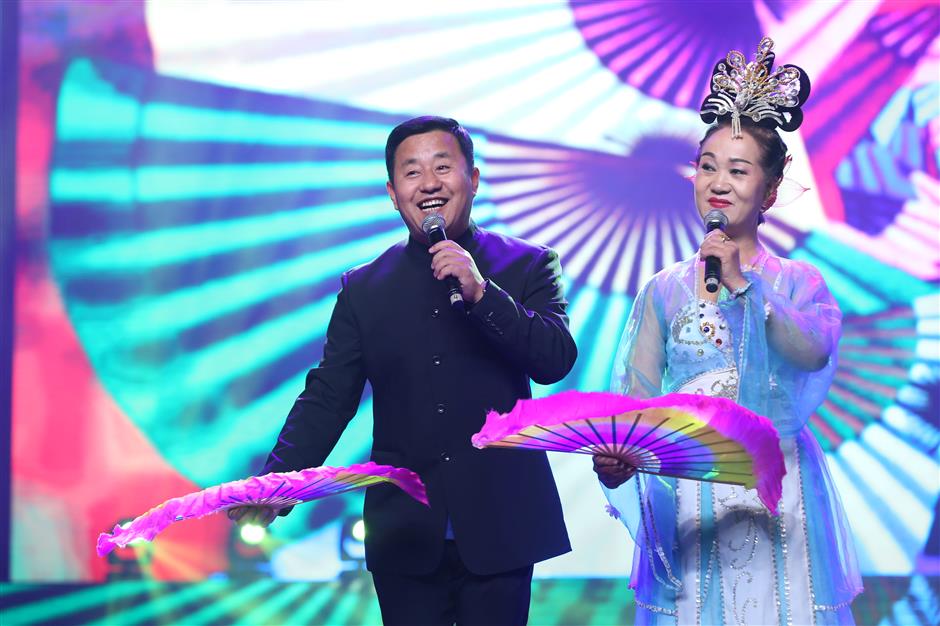Northeast's cultural gift: a song-and-dance for two
Er Ren Zhuan, or song-and-dance duet, is a special folk performance in northeast China, which covers today’s Heilongjiang, Jilin and Liaoning provinces and the eastern corner of the Inner Mongolia Autonomous Region.
Northeast China used to be the homeland of a number of ethnic groups, especially the Manchus, who conquered China in 1644 and established the Qing Dynasty (1644-1911).
Despite the fact that during the early Qing Dynasty, emperors tried to stop the Han people settling in northeast China, the Han people remain the overwhelming majority in the area.
And many of their ancestors came to northeast China during large-scale migration in the 19th and 20th centuries, which was called “chuang Guandong,” or “venture into the east of the pass.”
The pass is the famous Shanhai Pass, a major gate in the eastern part of the Great Wall, which separates Liaoning Province from Hebei Province.
Of those who “ventured into the east of the pass,” many came from Hebei and Shandong provinces, bringing with them art forms from their home regions, such as yangge, a popular rural folk dance and lianhualao, a mixture of singing, dancing and storytelling, which later became the key elements of the so-called Dongbei Er Ren Zhuan, or Northeast Song-and-Dance Duet.

Wearing simple make-up and costumes, the performers of Er Ren Zhuan usually play different roles and mix storytelling, dialogue and acting with singing and dancing.
Er Ren Zhuan means literally “two-people rotation,” although there may also be solo performances, called danchutou, and group singing, or lachang.
Wearing simple make-up and costumes, the performers usually play different roles and mix storytelling, dialogue and acting with singing and dancing.
The only props are foldable fans and handkerchiefs. Many Er Ren Zhuan performers can twirl their handkerchiefs in a hundred ways and directions, showing dazzling dexterity.
In the past, the performers would also spice up their performance with lewd, smutty subjects and even explicit talk about sex.
So, this is probably why Er Ren Zhuan was originally performed only by male actors, with one playing the clown and the other a female. It was not until the 1950s that female actors began to appear. Nowadays, Er Ren Zhuan is typically played by one man and one woman.

The only props are foldable fans and handkerchiefs. Many performers can twirl their handkerchiefs in a hundred ways and directions, showing dazzling dexterity.
Er Ren Zhuan has been extremely popular in the northeast for about 200 years, partly because it needs only two performers, few props and little space.
This means it can be staged just about anywhere, such as the edge of a field, a threshing ground, small meeting room or even a living room.
Another reason is that entertainment was scarce, especially during the region’s long and bitter winters.
An old northeastern saying goes: “We’d rather give up our three meals of the day than a single episode of Er Ren Zhuan.”
Giving up meals was no small sacrifice. In winter, food was often scarce and many families, especially in rural areas, would only afford two meals a day.

Zhao Benshan (in black), a household name in China as a comedy actor, started his stage career as a performer of Er Ren Zhuan. He has been successful in introducing the art form to people living out of the northeast China.
Through its long evolution, this unique art also brought forth many famous performers, including Zhao Benshan, a native of Liaoning Province born in 1957, who is also a comedy actor and director.
Zhao has spent many years promoting a bowdlerized version of Er Ren Zhuan by removing lewd and smutty subject matter. But his efforts have its admirers and detractors.
Some praised him for introducing “clean” Er Ren Zhuan, but others say that Zhao’s version loses its earthy appeal.
However, Zhao has been very successful in making Er Ren Zhuan better known in the rest of China.
Zhao first appeared at the CCTV Chinese New Year’s Eve Gala, the most popular TV arts performance in China, in 1990. He performed every year from 1995 to 2011 on the Chinese New Year’s Eve. As a result, people across the country have now become more familiar with this unique style. Many TV stations and theaters around the country host performances.
In 2006, Er Ren Zhuan was added to China’s national list of intangible cultural heritage.

Of those who “ventured into the east of the Pass,” many came from Hebei and Shandong provinces, bringing with them art forms from their home regions, which later became the key elements of the so-called Dongbei Er Ren Zhuan, or Northeast Song-and-Dance Duet.
















